Filipa Ramalhete
framalhete@autonoma.pt
Centro de Estudos de Arquitetura, Cidade e Território da Universidade Autónoma de Lisboa (CEACT/UAL), Portugal | Centro Interdisciplinar de Ciências Sociais da Universidade Nova de Lisboa (CICS.Nova)
Marta Sequeira
martasequeiracarneiro@gmail.com
Auxiliary Professor at Da/ UAL | Invited Auxiliary Professor at ISCTE-IUL |Integrated researcher at CIAUD-FAUL
To cite this paper: RAMALHETE, Filipa; SEQUEIRA, Marta – Interview with architect Ricardo Bak Gordon. Estudo Prévio 17. Lisboa: CEACT/UAL – Centro de Estudos de Arquitetura, Cidade e Território da Universidade Autónoma de Lisboa, 2019. ISSN: 2182-4339 [Available at: www.estudoprevio.net]. DOI: https://doi.org/10.26619/2182-4339/17.1
It is our great pleasure to interview architect and lecturer Ricardo Bak Gordon. Welcome. We would like you to start by telling us a little bit about your education, your teachers, exercises you remember…
I was fortunate in that I did not have a high enough grade to enter university in Lisbon and had to go to Porto. I had little idea of what architecture entailed and of its teaching. Though I had studied at an art school – António Arroio – where I first became interested in architecture, I was far from knowing the field or knowing its main actors.
Because my grade was 0.3 lower than the admission grade in Lisbon, I went to Porto. This was not only an extraordinary discovery in terms of the faculty of architecture at UPorto (and everything that it implies) but it was also my first time living away from home, which is a means of practicing architecture, i.e., being able to look at a place and see it for the first time. I have the dream (I usually say that this is the only dream that I can never fulfil) of arriving in Lisbon one day and see it for the first time. But for that to happen I would have to suffer from a pathological disease!
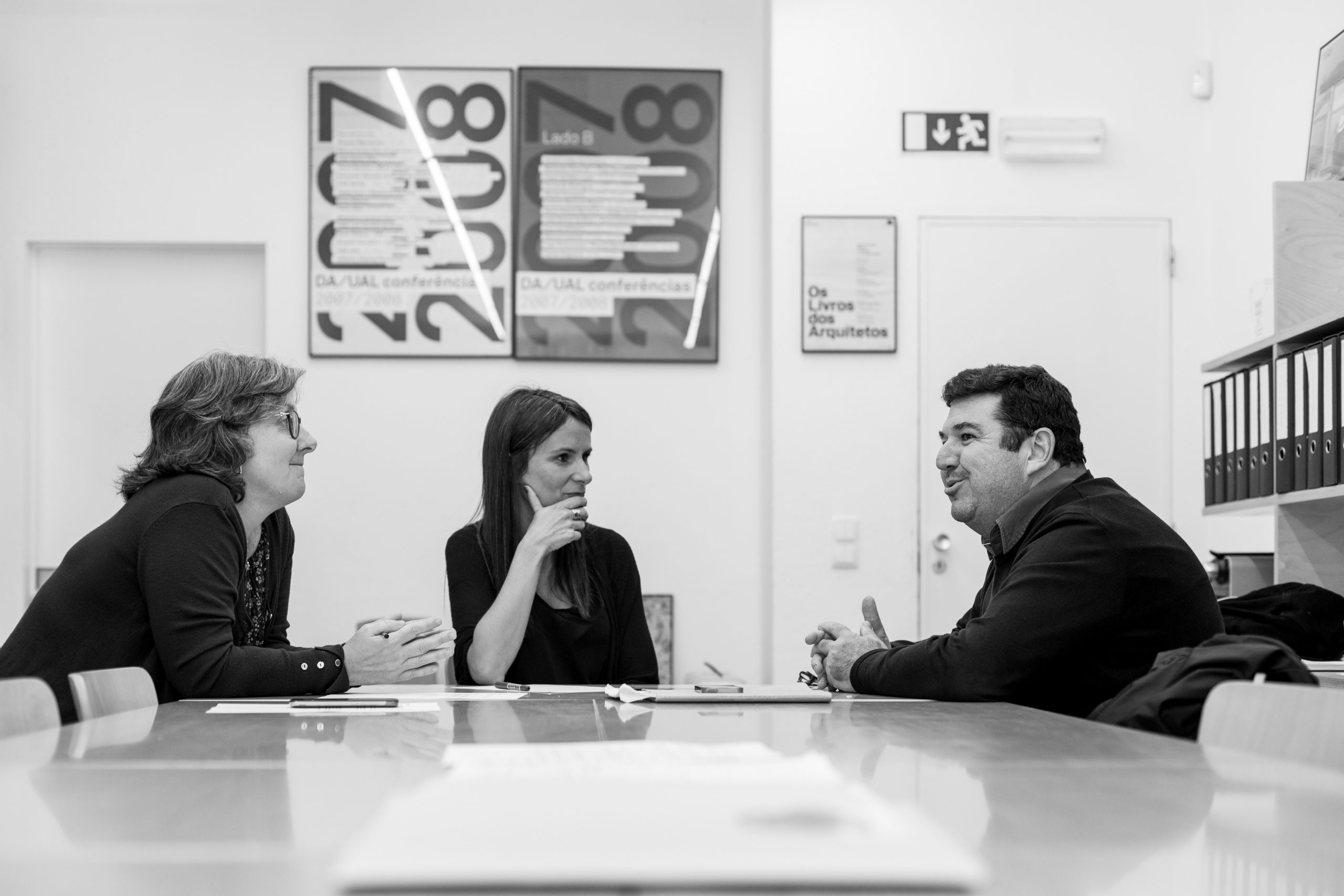
©Gonçalo Henriques + Estudo Prévio
So, I went to Porto and not only was I able to know the city but also have the experience of attending an incredible school, which included the topic “drawing as language and as expression” in my first year. This was perhaps the most relevant course in that first year, the issue of drawing almost completely absorbed the students’ experience that year. I also had the experience of starting to know the actors and figures I had never heard about, the most relevant being architect Álvaro Siza. Finally, I had the experience of community and of student/teacher relation, which was rather intimate at Porto, and which had an impact on me. As a teacher, I also have a very close connection with my students, which is a consequence of that experience. In fact, there was great intimacy, we were all together in one big room with all the teachers and the most extraordinary thing would happen, which I would not witness in the other universities I attended – teachers and students informally addressed one another, something that was only common in Anglo- Saxon countries, it did not happen in any school in Portugal.
This was in 1985/86. At the end of the first year, I requested a transfer to Lisbon, because, though I really liked the experience at Porto, I was from Lisbon and staying in Porto meant an added expense for my parents. I was very happy with that decision because Porto was a place to “go and come back”, not a place to stay in terms of studies.
I came to Lisbon and had a huge shock. The cultural and academic environments were very different. In Porto, we discussed the latest papers by Siza Vieira and Kenneth Frampton’s Critical Regionalism, while in Lisbon the heroes were Michael Graves and architect Tomás Taveira. This evidences the massive difference in terms of training between the two schools and my need to adapt. This forced me to understand the pros and cons of each of them.
Later, I was one of the first to participate in the Erasmus Exchange program (it began in 1988, it has just celebrated its 30th anniversary). One day, I was at the Escola de Belas Artes, in São Francisco Convent, where we had our classes, and somebody said: “They are going to conduct interviews for a cultural exchange program, students will be able to work in other universities”. Somewhat blindly (which is typical in my life), I walked to the line for the interviews and was selected. I arrived home and told my mother that I had been selected to study for a year at Politechnico di Milano.
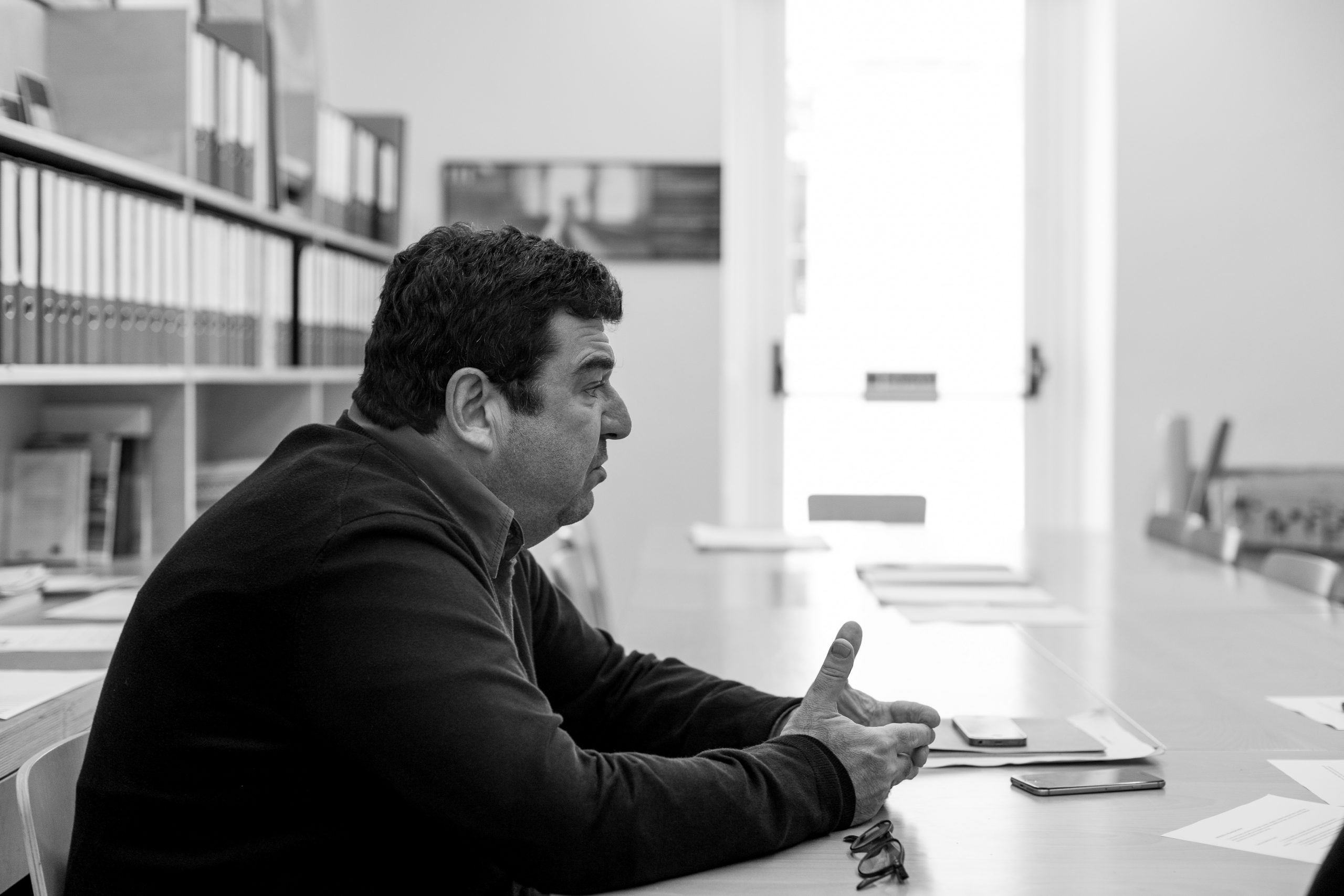
©Gonçalo Henriques + Estudo Prévio
My higher education includes these three schools and the different experiences I had in each of them. I can find pros in all of them. In the case of the Politechnico di Milano, project classes were secondary when compared to the other interests it offered. The school offered conferences, something that did not occur in Portugal: one day Rem Koolhaas was speaking, the next day it was Tadao Ando – and many other extraordinary people with whom we were able to have a close relationship. The school had an architecture bookshop unlike anything in Portugal. I would spend my afternoons there, where I saw, read and met from Palladio to Aldo Rossi to the deconstructivists (the famous orange book…) I got in contact with all that in my endless afternoons there.
Finally, I was in the centre of Europe. Two hours away from five to seven countries. I travelled extensively. What I took from this is that I am not trained by one school or place, and that is massive. I did not value one school, figure, moment, or place over others. This has given me some self-teaching skills, as if I were a hunter-collector who walks around and collects the best he finds in the different places he passes through.
In regard to Porto, there are several people who did something similar to what I did at that time. They started studying architecture in Porto and then moved to Lisbon. They are quite well-known architects today and have their offices in Lisbon. It became a process – you go to Porto and then come back to Lisbon. Would you like to expand on this?
At that time, to access grade in Porto was lower than in Lisbon. That was the reason why I and others went to Porto. I admit that other students, more educated on the pros of the Porto school – students whose parents were architects, who knew who Álvaro Siza and Fernando Távora were, already knew the Porto school and chose the architecture school at Porto, because their families helped them choose the school, that path. And Porto was the place to study at, that was what made sense at the time.
I really enjoyed the year I spent there and what I learned there. My learning goes beyond architecture, way beyond the limits of learning, teaching, architecture practice and architecture pedagogy. I learned about the human relation between the school communities and I never again lived it so intensely and so intimately. That is something invaluable in my academic life. Another invaluable element was drawing as communication: I still draw every day. I perfectly remember the day that I sat down and was told: “Learning to draw is like learning to speak Mandarin. There is no such thing as having a knack for drawing! You have to learn to draw and, once you have mastered the language, you will find out that it is the fastest research language in architecture”.
Drawing is the second fastest language, the fastest being dream and thought.
My drawing professor was José Grado. He was a mythical teacher, you either loved or hated him. He was very strong, sometimes even violent, in the way he connected with students. For me, that was an incredible discovery – that work methodology (using drawing) is one I cannot see myself not use. Though we know that architecture is researched using several different methods, drawing is not the only way to conduct research (Jaque Herzog says with pride that he does not draw), for me, that is a very important element that I learned in Porto… But I learned many others.
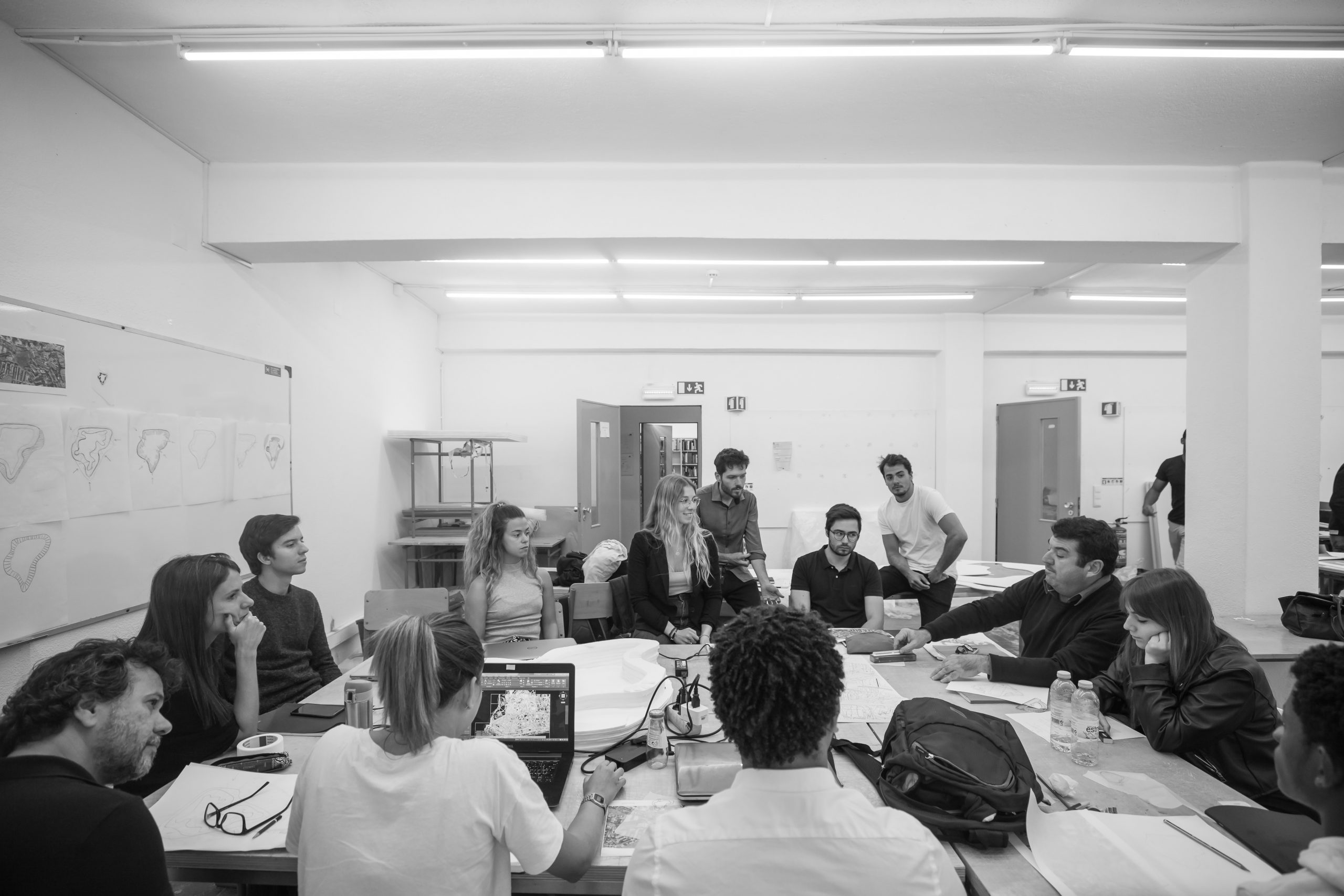
©Gonçalo Henriques + Estudo Prévio
In our interviews, architects often speak about the discovery of perspectives, of new courses, as was the case of Drawing, which you mentioned. Were there other areas in which this occurred?
Other areas… Perhaps something that was even more important than drawing was architect Fernando Távora as a teacher. Looking back, he was perhaps one of the most important figures in my academic years, in all the universities I studied. The way he taught us how to think and talk about architecture, in a passionate but simple manner.
I think that one of the most important aspects in architecture is the ability to synthesize and simplify its content. We interact with students – and with a wide community (citizens, people in general) and the ability to convey information in a simple way that others can understand is rather important. Listening to Professor Távora draw and tell stories was extraordinary: he talked about being one of seven brothers; how the soles of his shoes were worn out and were passed on from brother to brother; about the stones in the sidewalks, how the stones in the church were worn out… A series of teachings based on actual, simple things in life, told in a passionate tone and with a poetic perspective of the world. A poetic gaze is something we cannot lose, or we will become technocrats, which we wish to avoid at all cost.
That may be the most important thing that an architecture school can teach.
More than anything else.
And how do you do that in your classes?
Maybe we should ask my students. How do I believe I do it? Firstly, by making people dream and wish for what they are going to be involved with. To start from zero, i.e., give our all to what we can produce, what does not exist yet, a positive contribution to people’s lives, to those around us and to the places we are going to change. This enthusiasm and this poetic vision are what I aim to convey to students.
There are also other rules that I consider guidelines for all my projects and participations in teaching; those rules are to structure the project in three very clear stages. The first stage is based on the principle that you cannot design a project without a strategic vision. For this stage, we can use words such as “concept”, “strategy”, “idea” – the words change with time, they are replaced because they are no longer in fashion. This is the opposite of those memories of early days at school, when we would sit, tracing paper in hand, and thoughtlessly draw lines and try to understand if something came up (I am completely against this principle). I want students to have inkling of what they are going to so before they start their design.
This inkling will allow them to start their research and change that idea into an architecture project. That takes long, the first images are blurry (just like a foetus in the mother’s womb, who is first only a set of cells, but which has in it everything to become a person, it is only not visible yet). After this is the stage of research, you let ideas ripen and develop until they become a project.
Finally, the stage of communication. Projects are made to communicate, they communicate on their own, we will not be there to defend them, to talk about them, they will have their own life. They will have their own life because they will enter a competition, they are accepted at City Hall, they will get permits and meet their clients (maybe you will have the opportunity to be next to them and defend them); and afterwards they will have other lives, as different as becoming a piece of art (and you will not be there) and be studied in 50 years’ time (if all goes well, and again, you may not be there). Language and communication are an important topic. This is why I ask my students to talk and talk and talk. To talk to me and to the mirror… And that only after they have talked to the mirror three times can they devise the idea, and the idea becomes denser. They then must filter and filter and build the sentence several times until it is accurate.
It is as if they were teaching their own project. Because you always learn through teaching.
Exactly.
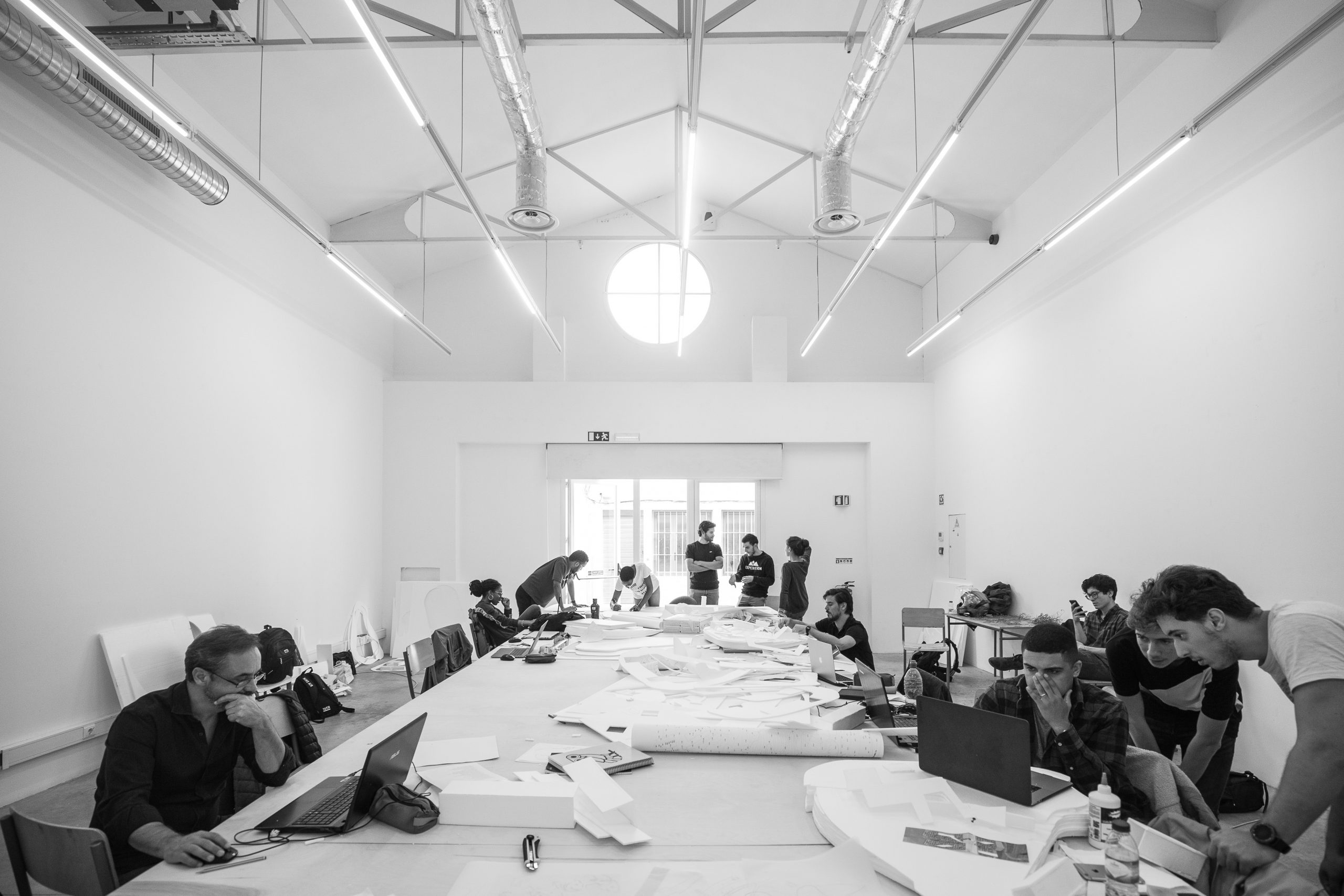
©Gonçalo Henriques + Estudo Prévio
Could you tell us about what you are planning for your workshop at Da/UAL [October 2019]?
This workshop has rather unique features. Its name is Estúdio Vertical (Vertical Studio). This is the first time that a workshop involves all students working as a group, in teams that include students attending different years. This is new and, in itself, an extraordinary experience. First year students will be with fifth year students, all cooperating and participating with their ideas, discovering their differences and their similarities and their common concerns with the project regardless of the year they are attending.
Our proposal was to focus on the concerns with the city of Lisbon and on major topics linked to cities. We have gone through an important crisis in Portugal and, at that time, some actions and reactions took place, such as the explosion of tourism in Lisbon. For some time, city authorities tried to support tourism in several ways, as well as grab the opportunity to take hold of the city’s public space, which was rather neglected by the municipality. We all know about the program “Uma praça em cada bairro” (a square in each neighbourhood), which resulted in several areas of the city being refurbished. We also witnessed another phenomenon, which can be viewed as positive from two perspectives – several areas of the city which are historical architecture heritage, and which were run down were refurbished, either by its users or by investment funds. They were partly responsible for what we call gentrification. We must weigh the pros and cons of this topic, though.
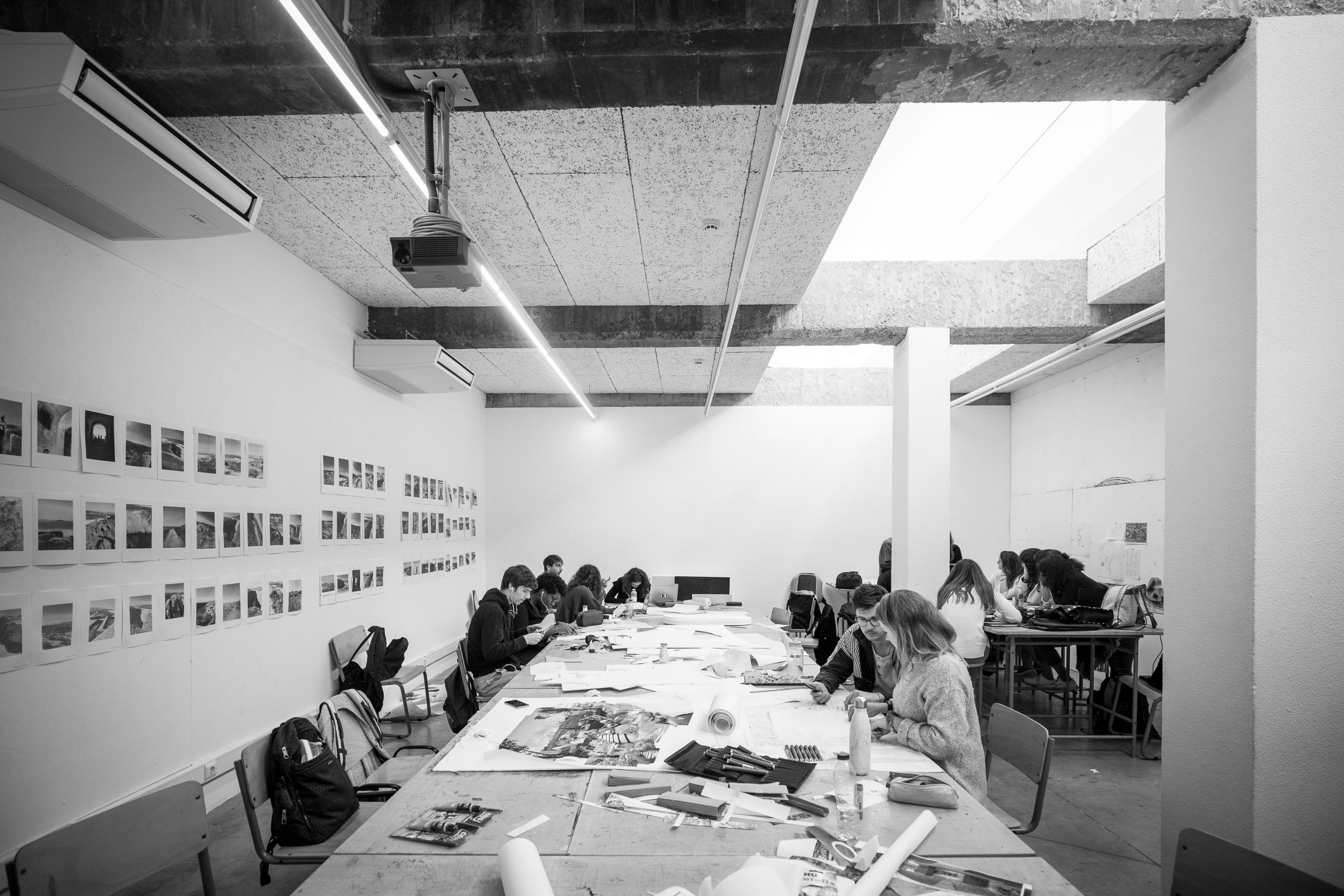
©Gonçalo Henriques + Estudo Prévio
A consequence of this phenomenon is a present concern – the lack of housing in cities. When we think about it, we cannot forget the several moments, since the modern movement when the city becomes further consolidated and the metropolis at the end of the rural exodus processes. In fact, there were times when Lisbon experienced a series of models and focused on collective housing: the models of the 1930s and 1940s, later those of the modern movement of the 1960s and 1970s; and afterwards, the public tools to deal with collective housing issues. After that, there seems to have been a time when silence has ruled, when no one has wanted to talk about housing anymore, it has become a non-issue. It was the concern of private entrepreneurs only and it no longer was regulatory although it should be at the core of regulation. Because cities are made of houses. To visit the Eiffel Tower and the Prado Museum is very nice but cities are made of houses and these are needed for people to live in.
Our proposal was to reflect on collective housing in a territory that is rather interesting. We did not look for a territory where conflict exists, as is common in teaching – to have students discuss on territories where there is conflict, where there is tension, either geographical or social. Here we are working in a very nice place, a natural extension of the city that is really a “place”, unlike other areas in which the city expanded but are still not real places. This is the case in the outskirts of Lisbon, by the motorways from Lisbon to Sintra or from Lisbon towards the northwest and even to the south of the river Tagus, where the city expanded in an unplanned manner.
Alto do Restelo is a very striking and symbolic place because it has 500 years of recognizable history and because around this area (about 25,000 metres of occupied area) there are several housing typologies. This allows students to understand how collective housing has been approached throughout time, shows them models, evidences there is not only one option and gives them the freedom to present a proposal for collective housing now.
And, in your opinion, how have students responded to this topic?
The students are responding very well to the workshop. It is a very exciting moment. I can see that the students and the groups are very dynamic. I think several elements have contributed to this, one of which is definitely the fact that the methodology used is the vertical group, i.e., that students from different years are working together. Moreover, it is a group of students with very different backgrounds and nationalities, there are students from different corners of the world, which gives this workshop an international feel. Finally, I believe the results will be very positive, exciting and definitely significant for the students’ academic path.
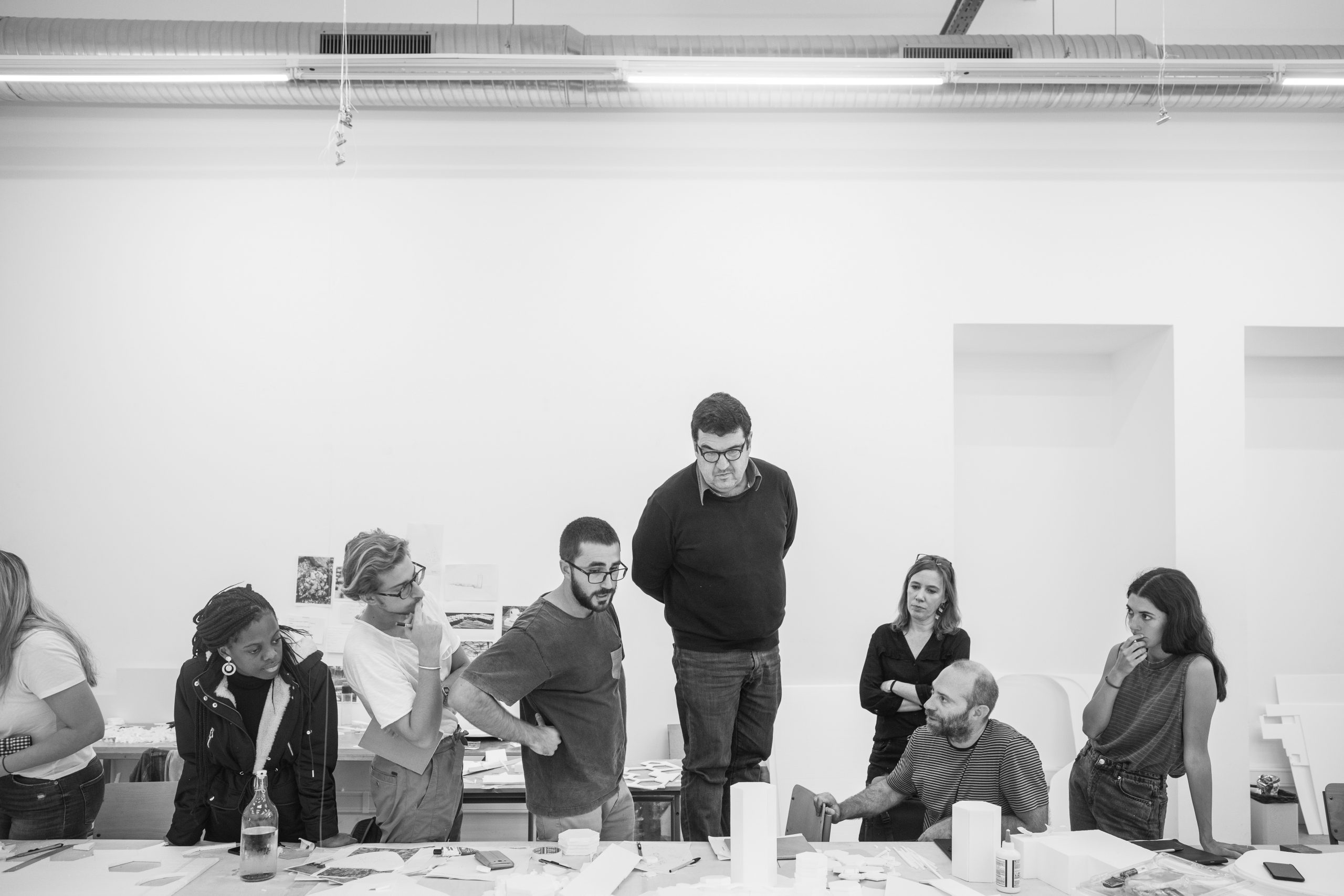
©Gonçalo Henriques + Estudo Prévio
You have taught in several architecture schools, both in Portugal and abroad. You have a sense of teaching and learning in architecture. You also studied abroad. What is your opinion on this school and how do you view these students (especially in the next week, which will be very intense)?
In fact, I have an encompassing perspective on the teaching of architecture. Not only because I have taught in Portugal and abroad, in several continents, but also because, in my work as a visiting critic, I have seen how many schools’ work. I think that UAL has a unique feature that has to do with its size, on the one hand, and with its lecturers, on the other hand. The lecturers are very united. And that has to do with the fact that they are a group. I know other schools like this, and they are all successful. I feel that UAL is like a group of friends who founded a school (I mean this in the best way possible), they are people with common interests, with differences, of course, but who share a view of the world and of the universe is shared, and who are the school’s leaders. They have respect for one another’s work, which is huge; they have a respected and respectful work as architects, not only as lecturers. There are not many outliers in the academic staff, in the faculty. In other schools it is in the faculty that you may find more diffusion: there are authors and lecturers that you value within the blurry group that is the faculty. Here I think there are many good lecturers per square metre. And the result is evident. I am very happy that, after 48 hours, the whole school is making models, discussing architecture, feeling excited, trying to understand the major topics under discussion, working with enthusiasm and believing it is worth it. Therefore, in my opinion, the school, the faculty, and the students, are ready to do well under any circumstances.
What do you take from experiences, such as this workshop or teaching in general, to your own professional experience?
I am not exactly one of those lecturers that takes his concerns on architecture to his classroom, at least not in my discourse. There are many lecturers who take to the classroom the work they are involved in and their major concerns in regard to architecture.
I view my academic activity in general as a personal and very enriching experience. As far as my students are concerned, I try to be somewhat of a music conductor, I want my students to do their projects, not mine, and I try to make them see their own paths more clearly. This brings me great pleasure and delight; it is great motivation for what I do. Classrooms are an exciting environment; they have a huge transforming capacity; they feed me with energy and I leave classes filled with energy to do whatever I have to do.
A while ago you said that the students are ready to go anywhere. Are there significant differences between what you faced at the beginning of your professional life and the challenges and context that students face today?
I see huge differences. When I was a student, we all worked in architecture studios, that was the common thing to do while doing your degree in architecture. Today, there are many more students, which can be explained by, for example, the fact that there are now 23 architecture schools, whereas, when I was a student there were only 3. This has not happened only in Portugal, it is an international phenomenon. Therefore, the ratio between the number of students and number of studios is not the same and it is harder more difficult for students and for studios. Labour laws have also added to these difficulties. I worked at architecture studios from my second year at university onwards. I collaborated with studios and with colleagues. Today, many of our 5th year students have never worked in an architecture studio. That difference alone is massive – that you cannot have a more or less permanent relation between practice and school. We worked at night, went to classes in the morning, went to the studio in the afternoon – and we had a close relationship with everything and everyone. When we finished our degree, there was continuity between what we would do and what he had done so far. Today, that continuity not only does not exist but there is also a void, a panic that students experience when they finish their degrees. Because studies cannot accommodate all graduates and we have not yet realized that training in architecture allows graduates to have other positions in society than work in a studio. Architects should work in other positions and I think that is something we should work on.
There are positive aspects, such as the way we look at the world as our home. People do not leave because they have to, they leave because leaving and coming back is something natural. The doors are open, and the world is your oyster. The Erasmus Program allowed this; you get in contact with other cultures; you then welcome here the friends you made while on Erasmus… Therefore, I believe the conditions are very different, starting your career is a lot different now. I do not know if it is harder to start now or if you simply start in a different way. We are many more now, we are fighting for better university education ratios. We have been fighting illiteracy since the 1970s (until very recently, 70% of the country’s population was illiterate), we are soaring now, so we must adjust.
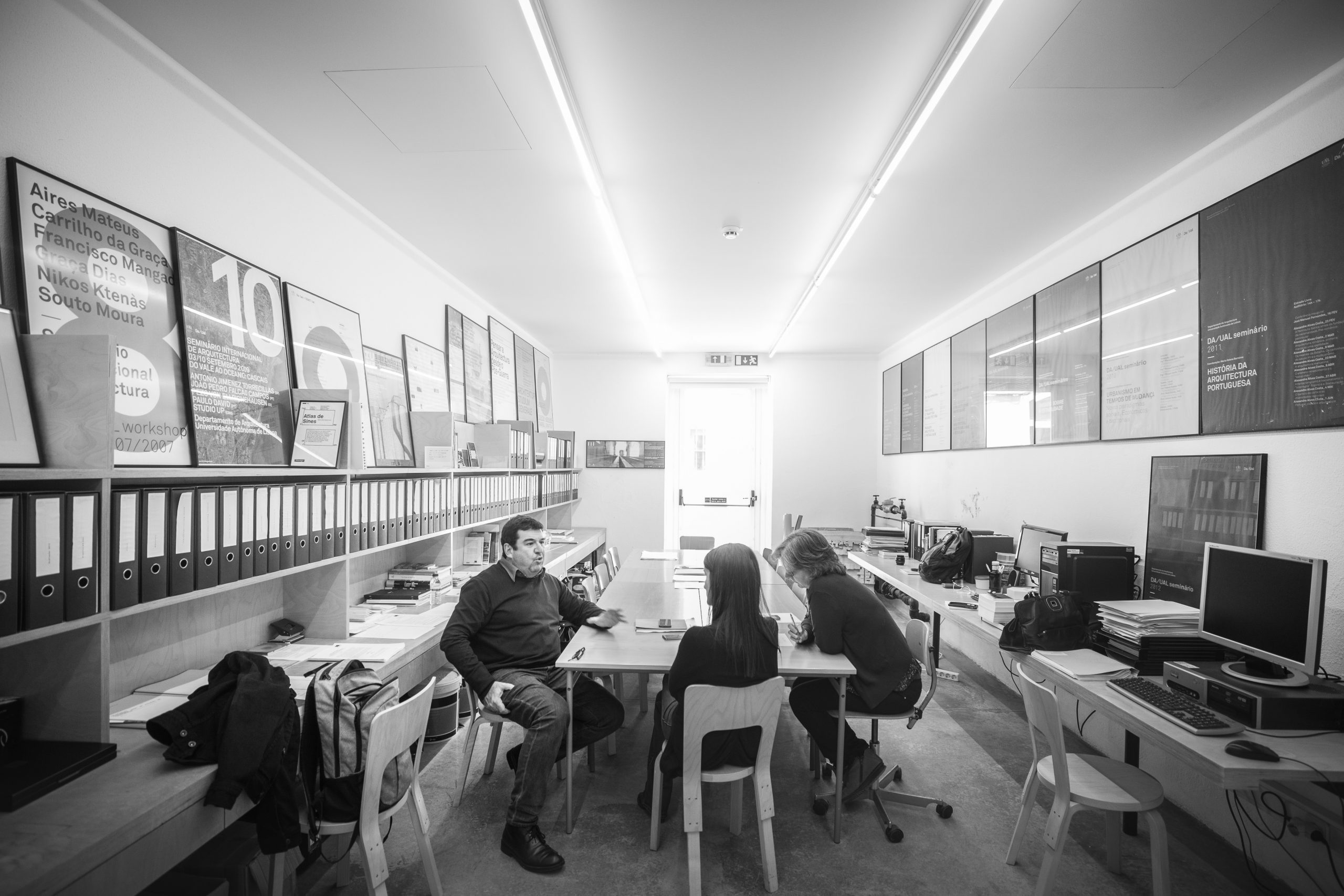
©Gonçalo Henriques + Estudo Prévio
You have spoken about the importance of travelling. Your travel to Porto and your Erasmus experience… That is something all our interviewees speak about, the passion for travelling. Would you like to share with us some trip that had a special meaning for you?
I have always enjoyed travelling, I got used to travelling when i was very young and I come from a family the travelled for leisure. I often remember small things from my travels, even from when I was very little, I have these vague but striking memories. Some people think that a kid may be too young to travel. But that is not true, you will always have memories from those travels as they are relevant for you.
I travelled a lot with family and friends, with friends who are lecturers here because, for quite some time, we had a group of friends with whom we would go on what we could call “architecture trips”, since our aim was to see architecture. I remember a historical trip we made to Mexico to see Barragán. It was very important, not just the trip itself but the architecture we saw.
I also travel without having architecture in mind. For me, architecture goes beyond going from building to building, from monument to monument or architect to architect. Architecture is my whole life, from the moment I wake up (even in my sleep, if the mattress is softer, that is architecture, if it is hard, that is architecture as well). Travelling is a key topic. However, more than the trips themselves, the most relevant is movement. When we get to the stages of developing the project, we discuss topics such as construction, execution, drawing a window frame or a door, and i always tell my students: “Before you arrived in class today, you have already opened and closed twelve doors, I cannot understand why you have not looked at any of them. They all have a frame, hinges, knobs, leaves. You just have to look! After class, we will go and see your door. Until now, though, you have come across a dozen doors and you have not stopped and looked at any of them”!
That is our daily journey…
There is a very beautiful sentence by architect Paulo Mendes da Rocha that says that “you learn architecture on your way to school”. I think that is exactly so.

